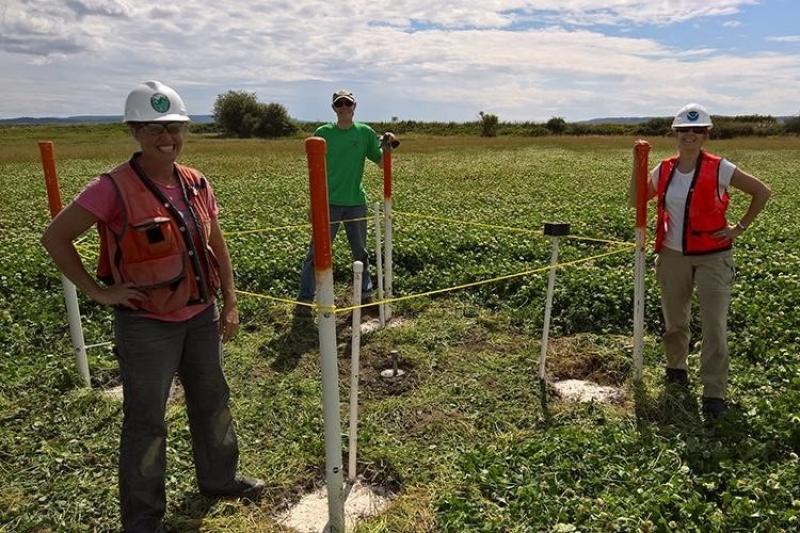Polly Hicks is the Policy, Planning, and Communications Supervisor for the NOAA Restoration Center, a division of the Office of Habitat Conservation. She has been with NOAA for 15 years. She recently relocated to NOAA Headquarters in Silver Spring, Maryland, after spending more than a decade at the Restoration Center’s Office in Seattle, Washington.
Describe your role in NOAA Fisheries’ Office of Habitat Conservation.
I manage the Policy, Planning, and Communications Team within the NOAA Restoration Center. Our team supports the Restoration Center’s work by leading activities that integrate across our regions and programs. Those include strategic planning, policy development, evaluation and data management, and communications and engagement. I work closely with our program and regional managers to ensure that the Restoration Center is making progress on our priorities, evaluating the impacts of our restoration work, and communicating those results. I’m new to this role; I was previously located in our Seattle office, where I provided technical assistance for on-the-ground habitat restoration projects.
What habitat work has been especially successful or inspiring to you?
The Fisher Slough Freshwater Marsh Restoration Project has always been inspiring to me. This project, located on the Skagit River in Washington, was the first in the delta to be completed on private land. The Skagit River region has a history of conflict over how the delta land should be managed. The developed landscape supports a vibrant agricultural community, but restoration of developed land is critical to recover threatened Chinook salmon. Richard Smith is a longtime farmer in the valley. He challenged The Nature Conservancy to use this parcel to prove that restoration actions could benefit salmon while still being compatible with agriculture. By establishing restoration goals for salmon recovery, flood risk reduction, and infrastructure improvements, the project garnered a wide array of partners committed to its success. The Fisher Slough project restored 56 acres of marsh habitat that support up to an additional 22,000 juvenile Chinook per year and provide nearly five times more flood storage capacity. The project also resulted in new partnerships between the salmon recovery, agricultural, and flood risk reduction communities. This paved the way for additional multi-benefit projects in the area.
Describe a time when you were surprised by fish and/or habitat.
The Elwha Dam removal and floodplain restoration project was a constant source of wonder and amazement to me. At the time, this was the largest dam removal in North America. My involvement in the project included working with the Lower Elwha Klallam Tribe on restoring the lower floodplain in anticipation of the dam removal. I also helped colleagues at the NOAA Northwest Fisheries Science Center monitor fish populations after the dam was removed. The scale of the change that I saw every time I visited that site—the speed at which the estuary reformed, plants grew back, and salmon returned above the dam—was truly amazing.
What person has expanded your understanding or connection to habitat?
Every time that I have the opportunity to explore a habitat with someone, I come away with an appreciation for how they connect with that habitat. When you explore a habitat with another person, you get an additional set of eyes and a new perspective. That, in turn, helps expand my own connection. I have been lucky in my career to get to explore different habitats with a variety of scientists, naturalists, tribal historians, farmers, and students. Each of them has shared a unique viewpoint about habitat.
Recently, my 7- and 9-year-old girls have provided me with a deeper connection to habitat. When we go hiking, paddling, or camping, my girls always find something new to observe or explore. My daughters ask amazing questions about why and how habitat is formed and how it functions for wildlife and humans. They marvel over the beauty that one finds in habitat that I sometimes take for granted.




